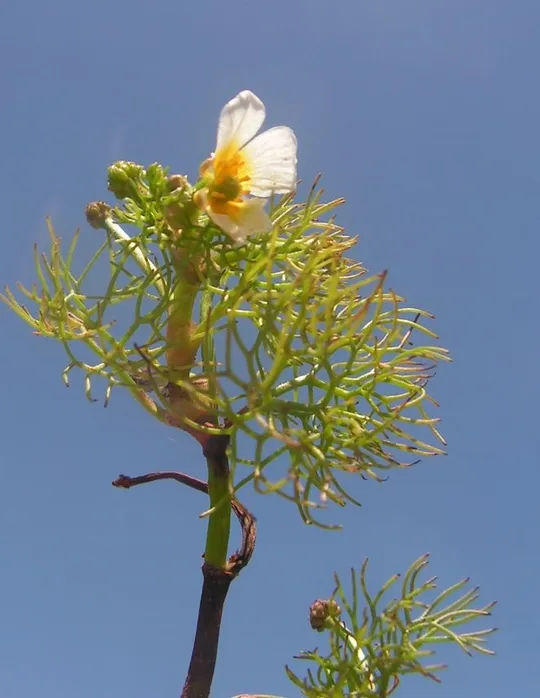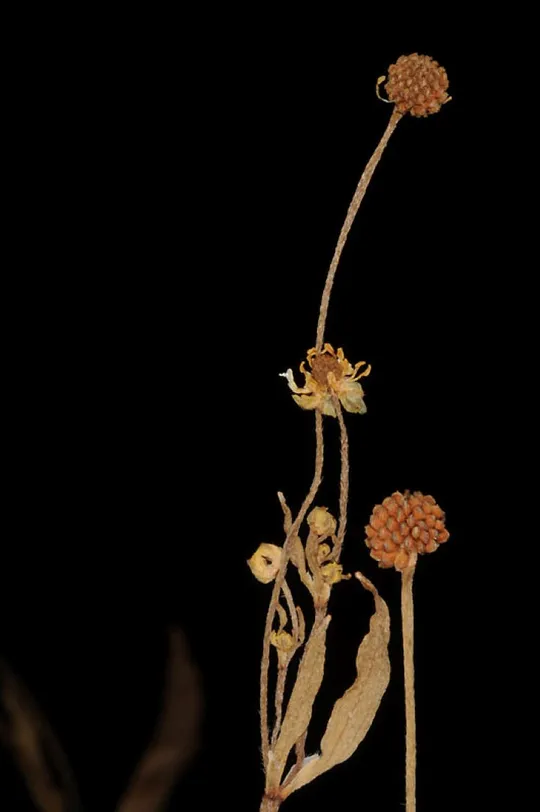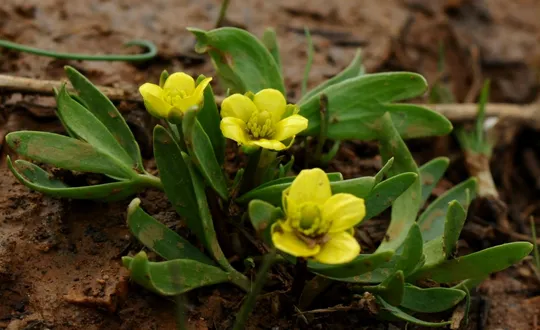Constantinople Buttercup
Ranunculus constantinopolitanus

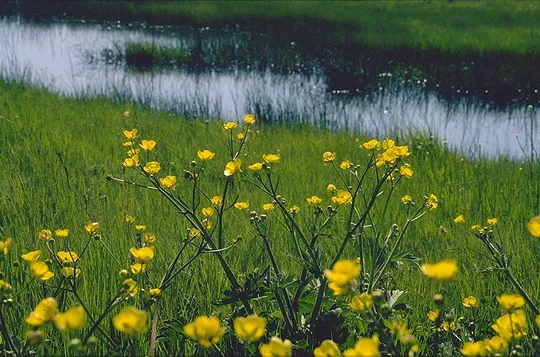
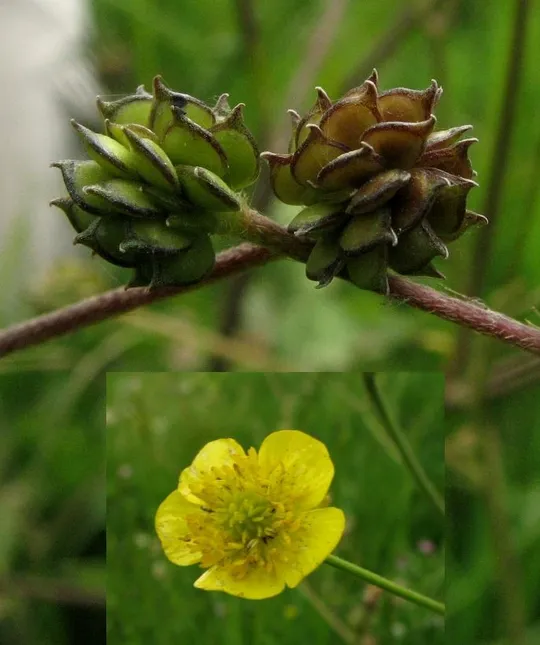
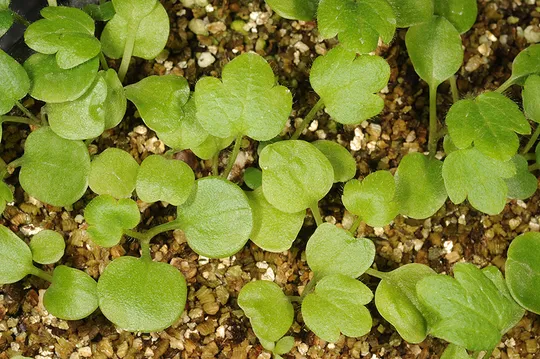
Ranunculus constantinopolitanus grows in the
Hula Valley, in the Golan Heights and the foot of Mount Hermon. It is found at 18
sites in Israel, mostly in the Golan and the Hermon, and according to estimates,
there may be about 20 sites. In the Hula Valley it known only from En Bdolah.
It has become extinct in Nuhela and from the Hula marshes from where it was
collected in the 1920s and 1940s. In the northern Golan Heights, it is found in
the Bashanit Ridge-Mesil Asnia-Hushnyia area, in the Sumka- Waset, Wadi Bazelet
(David Porat, 2009) and at the Tsir HaMapalim Junction. In the lower Hermon it
is found in the Yafori Valley springs, Mount Keta, Neveh Ativ and Hazuri. Smoli
and Naftulsky once collected R. constantinopolitanus in the Upper Galilee near Kfar
Gil’adi and Tel Hay, but it is no longer there. It is possible that these
collection sites were in fact in the Hula Valley.
Various moist
habitats with heavy soils – spring margins, humid depressions and areas flooded
in winter. The plant grows in places where the ground dries out completely in
the summer and also in places that remain wet almost all year round (spring
margins). Ranunculus constantinopolitanus
is typically
found in herbaceous vegetation, often dominated by perennial Gramineae
(Poaceae) and Cyperaceae.
: For the genus – see Ranunculus ophioglossifolius.
R. constantinopolitanus is an extremely variable plant that
has several varieties and morphs and was described from Istanbul
(Constantinople) in the 19th century. The plants in Syria, Lebanon and Israel
are tall, and have been described as the palaestina variety (Post,
1932). In Turkey, this
variety gradually becomes the typical variety that has characteristic very
large lower leaves, which have broad overlapping leaflets. In northern Turkey,
there is a small-leaved type similar to the Ranunculus from Georgia and in the high mountains there is a dwarf
type that has narrow leaflets (the Flora of Turkey, Davis, 1965). There is need
of additional taxonomic work to understand whether R. constantinopolitanus is a broadly distributed variable
species or whether this is a case of a number of local species that slightly
hybridize among themselves at the edge of their range. Nevertheless, in our
region this Ranunculus is a distinct species that does not
hybridize with other species.
·
The number of R. constantinopolitanus sites in the
Golan Heights and at the foot of Mount Hermon seems to be stable at this time. However,
the number of plants at one site in the Hula Valley has decreased and the
species is now extinct in the Upper Galilee (as noted, these sites may be
either in the Hula Valley or on its border).
·
Moist habitats are threatened by the
constant utilization of their water sources and pollution.
·
Some of Mount Hermon sites are located
within the boundaries of the Mount Hermon Reserve. In the Golan Heights, the
sites are located on proposed reserves that have not yet been officially declared.
The only site in the Hula Valley – En Bdolah – is a declared nature reserve.
·
R. constantinopolitanus has a broad distribution
and is not in globally endangered, but if taxonomic research will show that this
is a separate local species, then the local threat is also a global threat. The
species is listed in the Red Book of Cyprus (Tsintides et al, 2007).
The Mount Keta Ranunculus constantinopolitanus population should
be protected against expanding settlement and local orchard agriculture. A
nature reserve should be declared in the Mesil Asnia area to protect large
populations.
Ranunculus constantinopolitanus is a broadly distributed
species, found in Romania and other countries in the Balkans, Southern Russia
(Crimean Peninsula), Caucasus, Turkey, northern Iraq, Iran, Cyprus, western
Syria, Lebanon and northern Israel. It is common at altitudes of 0-2000 meters
(Davis, 1965). R. constantinopolitanus
is common in
Turkey but becomes extremely rare to the south. Northern Israel is the southern
limit of its range.
Ranunculus
constantinopolitanus is a perennial herb found in moist habitats in the
northern Golan Heights, at the foot of Mount Hermon, and to some extent in the
Hula Valley. It is a peripheral species and northern Israel is the southern
limit of its range. Its habitat is sensitive to desiccation.
Current Occupancy Map
| 1000 squre meter pixel | 5000 squre meter pixel | 10000 squre meter pixel | |
|---|---|---|---|
| number of observations | 0 | 0 | 0 |
| in total pixels | 0 | 0 | 0 |
| Family | Ranunculaceae |
| Classification | On the endangered species list |
| Ecosystem | Mediterranean |
| Chorotype | Eastern Mediterranean (Irano – Turanian) |
| Conservation Site | Mesil Asnia |
| Rarity |
1
2
6
|
|---|---|
| Vulnerability |
0
2
4
|
| Attractiveness |
0
1
4
|
| Endemism |
0
0
4
|
| Red number |
1
3.2
10
|
| Peripherality | N |
| IUCN category | DD EW EX LC CR EN VU NT |
| Threat Definition according to the red book | Vulnerable |
 Based on:
Based on:
